The Rikuzentakata City Museum, which was devastated by the 2011 Great East Japan Earthquake, reopened last fall. The only surviving curator, Kumagai Masaru tirelessly rescued and restored displays while facing calls to "look for people first." But his belief that "cultural assets are indispensable for true reconstruction" kept him going. His determination to pass down community memories to the future was reaffirmed through a stuffed Kingfisher donated by local children. This led to a miracle upon the reopening of the museum.
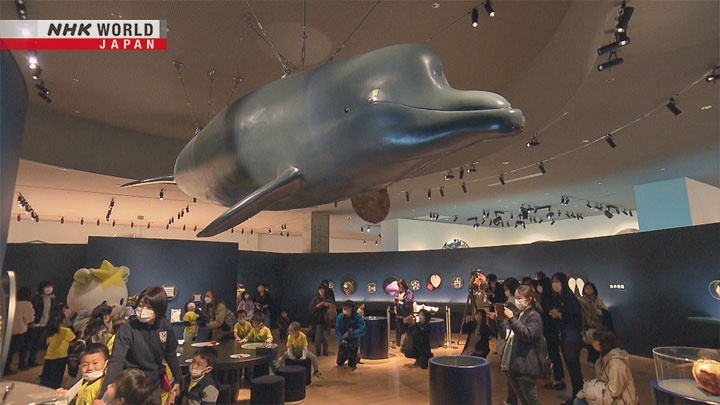
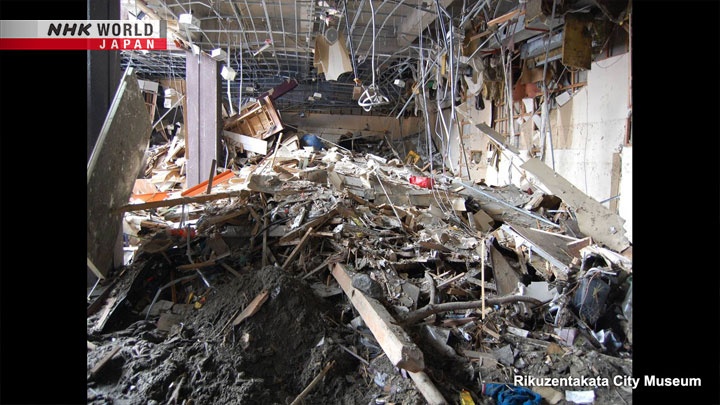
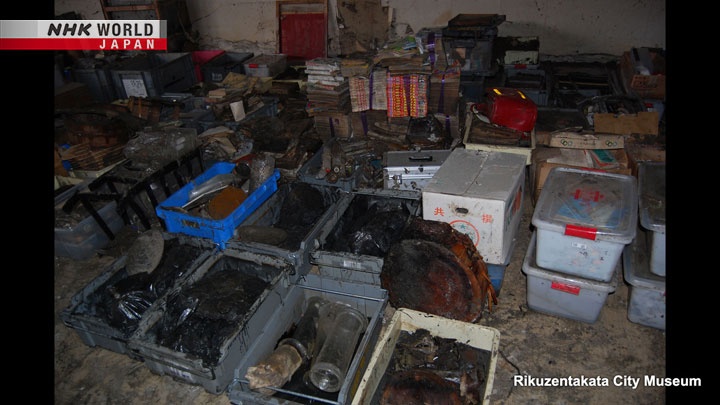
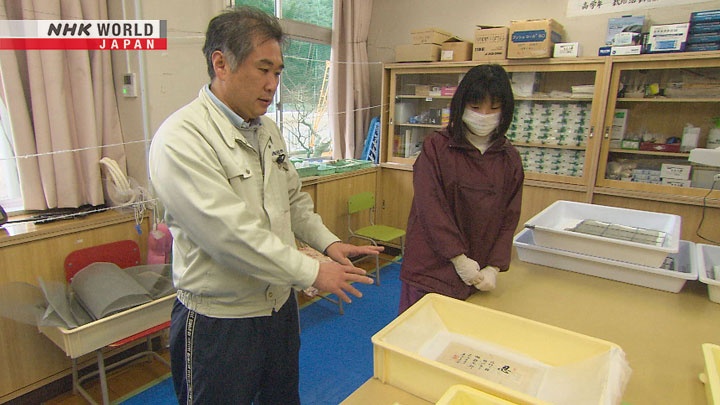
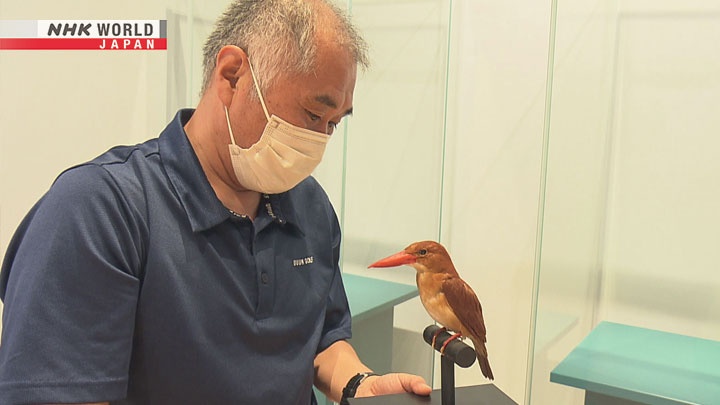
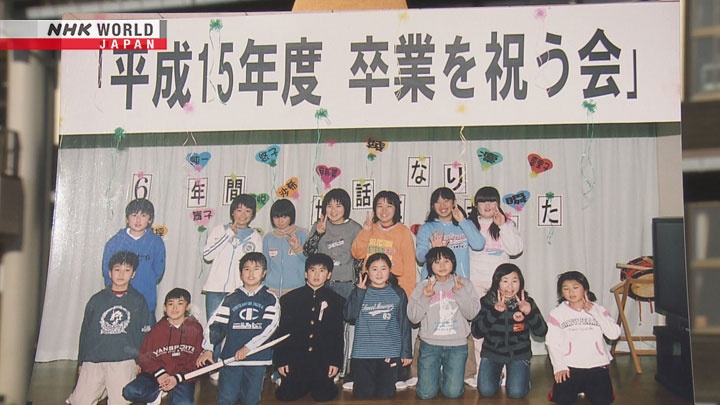
Transcript
A city museum in coastal northern Japan is reopening after 11 years.
Displays range from natural local artifacts to items of cultural significance...
...like this type of fishing tool, which is even in the collection of NY's Metropolitan Museum of Art.
This day has enormous meaning for Kumagai Masaru, the chief curator.
It's really wonderful to hear
children's voices again,
and these objects seem pleased
to be back as well.
Every object tells a story about the lives of locals.
A common thread links these displays.
They were all swallowed up in the 2011 tsunami.
But Kumagai and others worked tirelessly to recover and restore them.
He wanted to protect more than just the objects.
They embody so much.
Without these cultural artifacts,
we can't map our future.
Thanks for having us.
Rikuzentakata-native Kumagai Masaru always loved the museum.
Becoming its curator was a dream come true.
This museum is unique in that almost all of the pieces in its collection have been donated by residents...
Such as this late 1950s-manual washing machine...
You will be surprised!
The Great East Japan Earthquake disaster struck in 2011.
A tsunami towering up to 18 meters swept away the town's center.
Kumagai evacuated to a building rooftop...
Still, the water swelled all the way up to his ankles.
It happened in a flash.
The wave came, and in minutes, everything was gone.
A tragic scene unfolded in front of my eyes, but my mind couldn't accept it as reality.
It felt like a movie.
The wave reached the top-floor ceiling of the museum.
The precious displays were washed away or buried.
I was completely dazed, just looking at what had happened.
But, the feeling that I had to do something took over.
Kumagai learned that he was the only museum employee to survive the disaster.
At first, he immersed himself in relief efforts, as a public servant.
Then, three weeks later, he organized a team to recover the collection.
Large amounts of debris were removed from the site by hand.
The team unearthed the objects one by one from the sediment, as if it were an excavation site.
In the end, well over 400,000 objects were rescued.
The objects deteriorate over time, so all I could think about was that we had to move quickly.
Our work wasn't over with the rescue - we had much more to do.
In 2015, four years after the earthquake, our crew visits Kumagai in Rikuzentakata.
We stop by a vacant elementary school in the mountains.
Thanks for helping again today.
Kumagai and his citizen staff are using the school as a base for their restoration work.
For this traditional wooden fishing gear, the surface sludge is carefully washed off.
But this is just the start.
There was virtually no precedent anywhere in the world for restoring objects damaged by tsunami on this scale.
Kumagai and his team relied on trial and error to determine the best practices.
It appears clean, but...
The biggest enemy is...salt.
If left untreated, the objects will be damaged by mold.
So, they soak objects in water repeatedly until the salt concentration drops below a specified level.
Books must be dissembled and soaked, page by page - and that can amount to hundreds of sheets.
Salt is like a ticking time bomb.
This process is really tedious.
But if we don't do it properly now, we'll have to do it over again later.
While things like paper may look similar, they absorb salt differently,
so there is not one standard removal approach.
For instance, this sheet had been soaking for three weeks with other pages.
But since it was taking longer than usual, the team separated some of them.
But still...
- The salinity values haven't changed?
- No.
Hmm...
Not easy.
You can do it.
Once the salt is removed from paper, more work awaits, including fumigation.
The entire process involves 21 steps and takes at least one month.
And it is only then that the repair process can begin.
Before rebinding the pages, this worker concentrates on carefully smoothing out any wrinkles.
It's not experts carrying out these painstaking procedures every day, but a team of local residents.
They've received specialized training to handle the restoration.
This "kamishibai," or picture-board story book, is getting its final inspection.
Former fisherman Murakami Kakumi is in charge of the fishing gear repairs.
He also shared Kumagai's desire to restore the cultural assets as quickly as possible.
This old basket was used for storing fishing ropes and hooks.
Very few people today know how to restore them the traditional way.
All these people have come together
to save things from the mud.
That's why I've pushed
my creaky body here to help.
Professionals around the country stepped in to support Kumagai and his team to develop complex restoration methods.
But they had hit some snags.
For example, materials that cannot be immersed in water for reasons such as ink smearing.
These items are being preserved in a freezer.
We have to make progress on these difficult materials.
You might assume that we could get through the same volume of items we covered in the past four years in the next four,
but I think things are going to take even longer.
Many objects are being stored this way, waiting for a treatment method to be developed.
Each and every museum display
bears its own history,
as well as the story of its owner.
That's why I won't give up.
It's my message to the tsunami
that we won't give in.
Our crew is back in Rikuzentakata a year later, in 2016.
All around them, city center reconstruction is going on.
And residents are trying to pull their lives back together.
Kumagai welcomes the progress, but worries it may be erasing the past.
People lived here.
They all had their own way of life here.
In the future, when their lives are stable and they have emotional leeway and they ask me what happened to the objects,
I don't want to have to say, 'They're gone.'
It's like car wheels.
If infrastructure is one pair of wheels, then the other is emotional recovery through cultural assets.
It's getting close to the time of the earthquake.
It's now 2:40 pm.
For people who saw the tsunami...
they will never forget.
Kumagai relives the disaster in his mind every day...
And in the weeks after, when he was searching for objects while others were searching for missing people...
Some people told me we should search
for people instead of things.
Of course, we always put people
before our cultural assets work.
That goes without saying.
But I'd be lying if I said that
I wasn't hurt by their words.
But that's work.
By autumn 2022, the face of Rikuzentakata has changed completely.
A new town rises on elevated land - a foundation for lives to flourish.
At the city center... the museum slated to reopen soon.
Chief curator Kumagai is busy installing the exhibits.
We've come this far,
thanks to the help of so many.
We couldn't have done it alone.
This is a ruddy kingfisher.
The migratory bird passes through the area during the summer, but is an elusive sight.
The kingfisher holds a special place in Kumagai's heart.
Some children found it after it crashed into the wall of their school's gymnasium.
Feeling sorry for it, they buried it in a grave.
By chance, Kumagai had heard about the rare bird.
Wanting the specimen for his museum collection, a student exhumed it for him.
After that, something unexpected happened...
On Saturdays, the children would go out of their way to drop by and ask, ‘How is our kingfisher?'
I'd let them into the storeroom and show them the bird.
This stuffed bird created a connection between the kids and the museum.
I've treasured it for a long time...
After the disaster, Kumagai discovered a pitiful sight.
The bird's neck was bent and its wings, damaged.
But he could not let it go...
A university professor friend of Kumagai, along with a taxidermist, came to the rescue.
The kingfisher was faithfully restored.
Naturally, I was thrilled.
The story of this ruddy kingfisher is totally unique.
So, of course, my attachment is different.
The same applies to the kids.
I have been thinking they would really be pleased.
They're adults now.
"Do you think they'll visit?"
I want them to come.
And I hope they'll immediately remember that time.
The arrival of the ruddy kingfisher was in 2003 when the students were in the 6th grade.
The buried bird had been exhumed by Fujisawa Junichi.
Not long after, the boy's world began to shift.
Immediately after the 2011 disaster, Fujisawa moved to a city where he had no connections.
Among my existing photos,
this one shows me, my dad and mom,
alive and well.
I really cherish it.
Soon after the ruddy kingfisher incident, Fujisawa lost his father to illness.
He graduated from high school, and just as he started working at a local company, the earthquake hit.
His mother went missing after the tsunami, and he continued to search for her for days on end.
His mother's body was found 2 weeks later.
Being in Rikuzentakata was truly painful.
My motivation to work and energy were gone, zero.
I had started working so I could help my mom, who'd had a hard life.
When she was gone, I lost my drive.
I didn't know if I could go on living, I was really that depressed...
when I first came here.
My last memory of Rikuzentakata is the tsunami, not a good memory.
But the ruddy kingfisher reminds me of the old bustling Rikuzentakata, which no longer exists.
It created this positive memory in my heart.
After 11 years, the day has arrived.
No one can see the sign from here.
I'm really, really looking forward to it.
Good morning. Please come in.
The community's treasures have come home.
Rikuzentakata's ocean, nicknamed the "sea of miracles," also has the power to sweep away things precious...
Everything here is a testament to people co-existing with the sea.
It's a culmination of Kumagai's passion.
His legacy.
Parents pass down these clay figurines to their daughters in a prayer for healthy growth.
This man is gazing at pre-disaster photographs, showing the town's beach in summer.
There were no swimming pools when we were in elementary school,
so we always came to this beach.
There were so many people, we couldn't even see the sand.
You hooked bait on it...
We caught fish this way...
When the man was little, he helped his grandfather use a basket like this.
I have fond memories of being raised on fishing.
That's how I grew up.
It formed me as an adult.
This organ was played for the children of the town's first kindergarten.
Makes me nostalgic...
So many memories from before the disaster pass through my mind.
Fujisawa Junichi who donated the ruddy kingfisher...
Oh!
It's huge.
I'm so surprised, I'm at a loss for words.
The scale is huge, twice as large as before.
His last visit had been during his high school days - 15 years ago.
The museum, for him, is a place full of happy childhood memories.
These were here before the disaster...
I remember seeing them.
I think this boat was here.
Are you Mr. Kumagai?
It's been a long time. I'm Junichi,
one of the kids who donated the kingfisher.
Glad to see you looking so well.
- Have you seen it?
- What?
Fujisawa didn't know what had become of the ruddy kingfisher after the disaster.
Oh...
Still looks the same, right?
- Do you remember?
- I do.
- So, he was found after all.
- He was found.
The ruddy kingfisher,
it's the first thing I went to look for.
I never forgot about the museum
and the kingfisher after the disaster.
- They've been always on my mind.
- Thank you.
This has made me feel we are connected.
When I saw the bird today,
I really felt that connection all over again.
- I am really grateful.
- That's wonderful.
To be honest, when I was pulling
museum pieces from the mud,
people were still recovering
missing bodies.
Some individuals told me
to look for bodies instead.
Hearing those words, even if
I believed I was doing the right thing,
made me wonder if
what I was doing was actually OK.
- Really, thank you.
- No. Thank you.
So glad that you are doing well.
Fujisawa is a father of two small children.
I want to come back.
It's like I was given back a place I want to return to.
I want to show my children that their father's hometown is nearby, using this museum as a starting point.
I hope they will feel a connection to it.
All done?
- Kind of...
- I see.
Piecing together a type of gull common here...
Kumagai uses games like this one, so young visitors can make discoveries about their city.
It's been 12 years since the disaster.
Many children don't remember or even know what Rikuzentakata had been like.
Great work.
History accumulates over time.
So a new story, new history from this place starts.
This was my goal. But I now realize it wasn't.
I'm just starting.